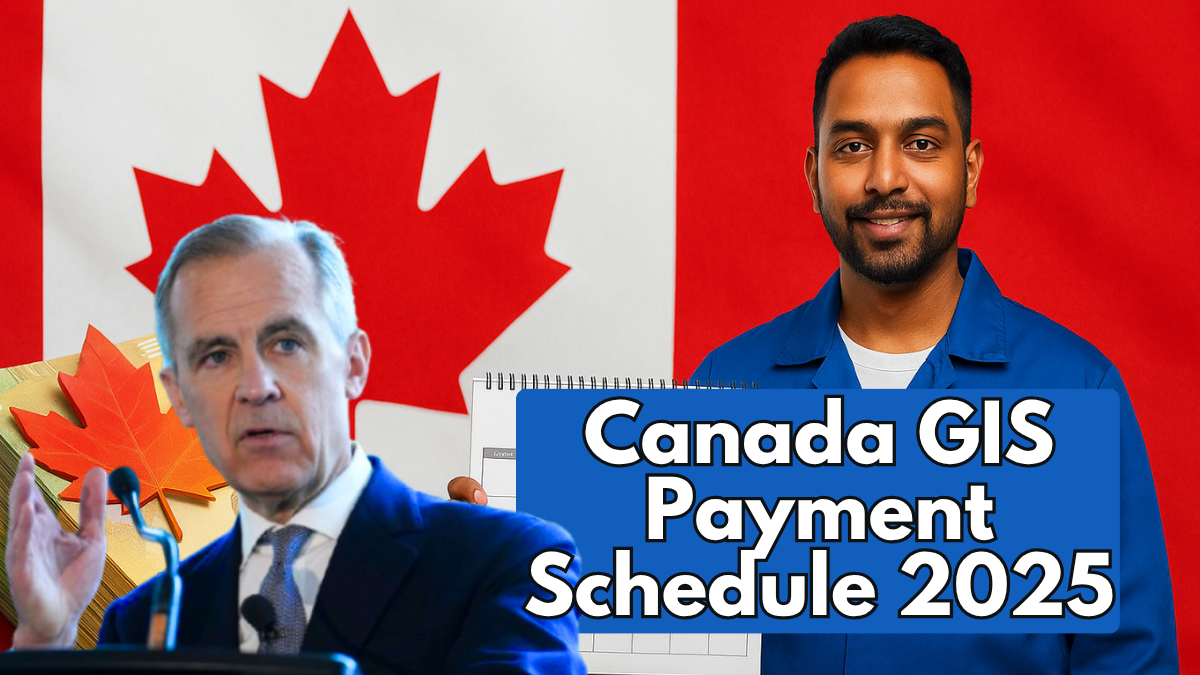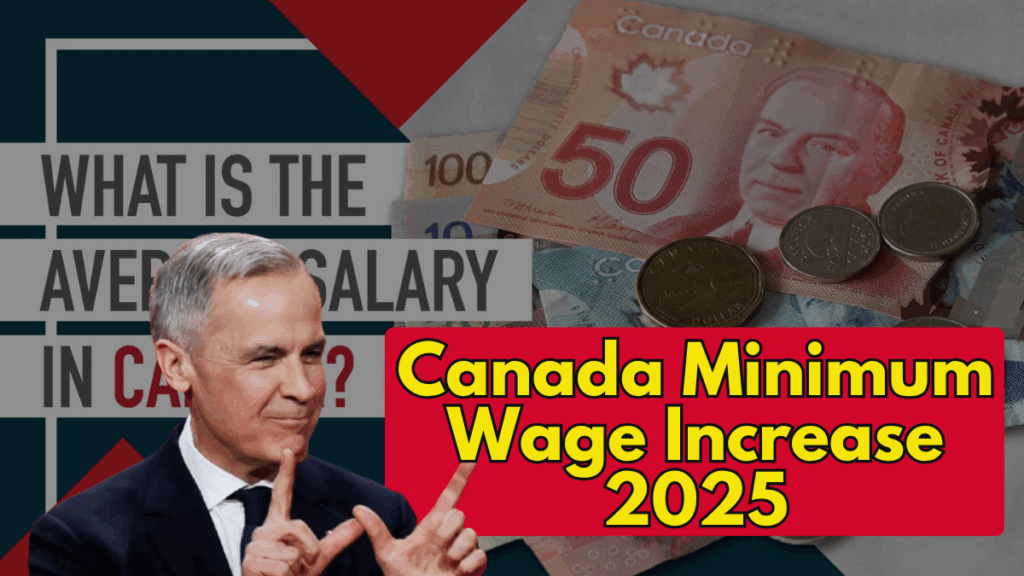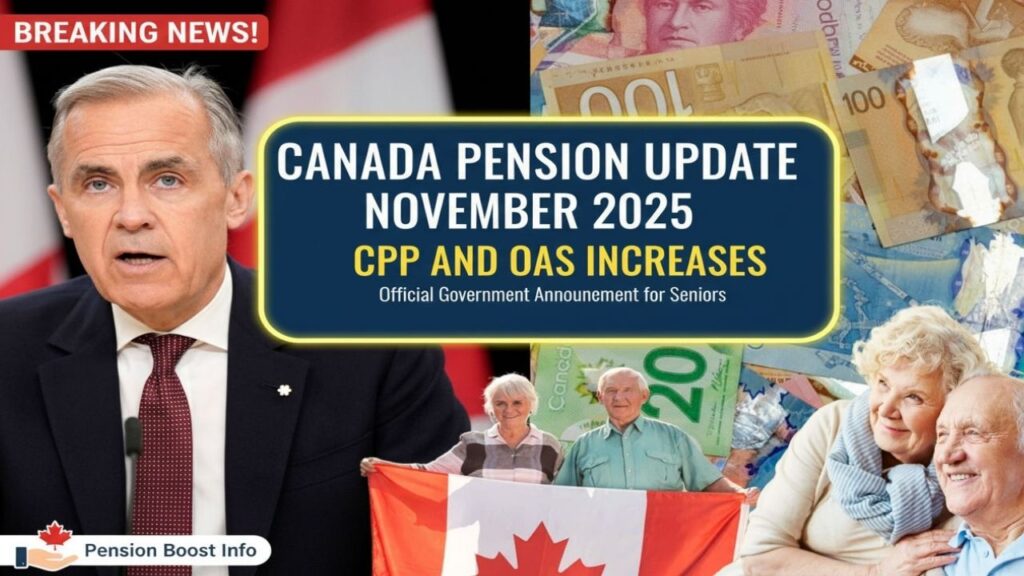The Guaranteed Income Supplement is a monthly, non taxable benefit that tops up the Old Age Security pension for seniors with low incomes. In 2025, GIS remains a core pillar of senior income security in Canada. Payments are adjusted quarterly to reflect inflation so that purchasing power is protected through the year. This guide explains who qualifies, how much you can expect, when payments land each month in 2025, how to apply or confirm automatic enrollment, and the steps that prevent interruptions.
Table of Contents
What GIS Is and Why It Matters

GIS adds an income tested top up to the Old Age Security pension. It is designed for seniors with limited resources who may have little or no other pension income. Because it is non taxable, the full amount arrives in your account and can be used immediately for rent, groceries, utilities, transit, medications, and other essentials. Quarterly indexing, tied to the Consumer Price Index, helps sustain purchasing power. If inflation falls, payments do not go down; they are held at the previous level until inflation indexing later exceeds that amount.
Summary Table
Item |
Details |
|---|---|
Program |
Guaranteed Income Supplement for OAS pensioners |
Who it helps |
Low income seniors living in Canada who receive OAS |
Payment frequency |
Monthly, non taxable benefit with quarterly inflation indexing |
2025 indexing months |
January, April, July, November |
Typical maximum amounts in mid 2025 |
About $1,090 per month for a single senior with very low income; lower per person amounts for couples based on combined income |
Key requirement |
File an annual tax return so Service Canada can reassess eligibility and amount |
2025 payment dates |
Jan 29, Feb 26, Mar 27, Apr 28, May 28, Jun 26, Jul 29, Aug 27, Sep 25, Oct 29, Nov 26, Dec 22 |
Official website |
Who Qualifies for GIS in 2025
You must meet all of the following:
- Age
You are at least 65 years old. - OAS status
You receive the Old Age Security pension. GIS is only payable to OAS recipients. - Residency
You live in Canada and meet OAS residency and legal status rules. - Income
Your previous year income is below the GIS cutoffs that apply to your situation. Cutoffs vary for singles and couples and depend on whether your spouse or common law partner receives OAS or the Allowance. OAS itself is not counted as income for GIS calculations, but most other income sources are counted, such as CPP or QPP, workplace pensions, RRIF withdrawals, investment income, and employment income. - Tax filing
You file an annual income tax return. Service Canada generally uses your return to reassess GIS automatically each July, with quarterly indexing adjustments layered on top in January, April, July, and November.
If you are not sure about your eligibility, use Service Canada tools or contact the department with your latest income information to estimate your amount.
How Much You Can Receive in 2025
GIS amounts depend on marital status and income level. Broad guidance for mid 2025:
- Single seniors with very low or no other income can receive up to about $1,090 per month.
- Couples where both spouses receive OAS face higher combined income limits but each partner’s GIS amount is lower, commonly around $660 per month per person when income is minimal.
- If your income rises, your GIS is phased down until it reaches zero at the applicable cutoff.
Amounts are reviewed four times each year in January, April, July, and November. Indexing can lift the payment during the year. If prices decline, payments do not decrease.
Canada GIS Payment Schedule for 2025
GIS is paid on the same day as OAS for most recipients. Direct deposit is the fastest method; cheques can take extra mailing time. Mark these dates:
- January 29
- February 26
- March 27
- April 28
- May 28
- June 26
- July 29
- August 27
- September 25
- October 29
- November 26
- December 22
Payments arriving at the end of the month help retirees line up cash flow for rent or mortgage payments, utilities, and recurring bills in early the following month.
Allowance and Allowance for the Survivor
If you are not yet 65, related programs may help:
- Allowance supports people aged 60 to 64 who have a spouse or common law partner receiving GIS or OAS and who meet income and residency rules.
- Allowance for the Survivor supports widowed individuals aged 60 to 64 with limited income who meet residency requirements.
Both are adjusted quarterly and can bridge income until age 65 when OAS and GIS may begin.
How to Apply for GIS
Many seniors are automatically enrolled when they start OAS, provided Service Canada has enough information. If not, you can apply:
- Online through your My Service Canada Account.
- By mail using the GIS application form.
- In person at a Service Canada Centre.
Have this information ready: Social Insurance Number, banking details for direct deposit, marital status, and recent income information for you and your spouse or partner. If you believe you have been eligible for some time, note that backdating is possible for up to 11 months from the month Service Canada receives your application.
Keep Payments On Track
- File your tax return every year even if your income is low. This is the most important step to prevent interruptions each July.
- Enroll in direct deposit to avoid mail delays or lost cheques.
- Report changes in marital status, address, or long absences from Canada.
- Monitor your My Service Canada Account for notices about reassessments or missing information.
- Understand income effects. RRIF withdrawals, investment income, or part time earnings can reduce GIS. If you are planning a large withdrawal, consider the timing and potential impacts on next year’s GIS.
Troubleshooting Delays or Errors
- Payment did not arrive
Confirm the pay date, check your bank account, and review your My Service Canada Account messages. If still missing after one business day, call Service Canada. - Amount looks lower than expected
Compare to last year’s tax return. If your income rose, GIS may be reduced. If your income fell and your payment is still high on the reduction side, ask about a reassessment based on a current year estimate in qualifying situations. - Change of marital status
Report changes promptly. Incorrect marital status can lead to underpayments or overpayments. - Address or banking updates
Update both quickly to avoid returned cheques or misdirected deposits.
Frequently Asked Questions
1. Do I need to apply for GIS every year
No. Most people are automatically reassessed each year using tax return information. Keep filing taxes on time.
2. Is GIS taxable
No. GIS is non taxable. You do not include it as income on your tax return.
3. Will working part time disqualify me
Not necessarily. Employment income counts toward the income test, which may reduce GIS. Whether you qualify depends on your total annual income.
4. What happens if I forget to file my tax return
Your GIS can be paused or stopped because Service Canada cannot confirm your income. File as soon as possible to restore payments.
5. Can I get back pay if I was eligible but not receiving GIS
Yes, up to 11 months of retroactive payments may be available from the date Service Canada receives a complete application that shows you were eligible.
Conclusion
GIS continues to shield low income seniors from rising costs in 2025 through predictable monthly payments and quarterly inflation indexing. Confirm your eligibility, keep your tax filings current, enroll in direct deposit, and use the 2025 payment calendar to plan your monthly cash flow. With a clear understanding of the rules and dates, you can avoid interruptions and get the full support you qualify for.
Official Website
For eligibility details, application forms, and secure account access, visit https://www.canada.ca
For More Information Click HERE











